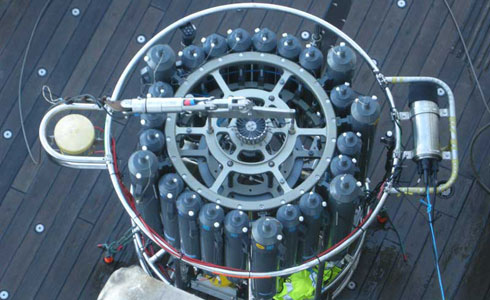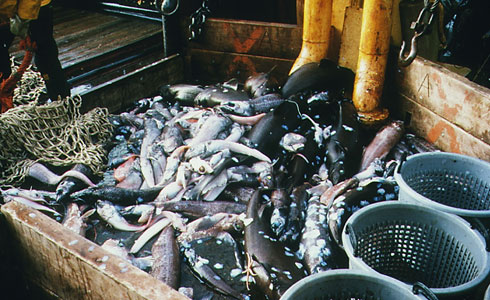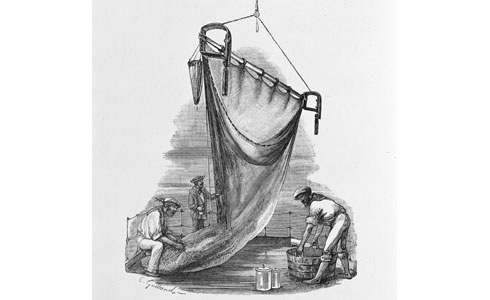- Home
- > Nature online
- > The science of natural history
- > The scientific process
- > Fieldwork
- > Collecting marine organisms
Primary navigation
Collecting marine organisms

Experienced divers collect fish and other marine organisms on the sea bed. This diver is collecting nematode worms.
Divers can plunge to depths of up to 50m and they can sometimes collect as many fish this way as they would in a large trawl net.

This rosette sampler is lowered over the side of a ship using a crane. It holds 24 bottles for collecting water at different depths, sometimes several hundred metres below the surface. When the water samples are brought back up on deck they are tested and filtered to find small marine organisms.

It can be difficult to observe life underwater so scientists have deployed an underwater observatory off the coast of Sweden. It contains a video camera pointing at the sea floor, and the images from the camera are streamed live to the internet, so scientists around the world can watch them.
Here, the observatory is being deployed.

Here is a catch from a trawl net on a boat. Trawl nets have an opening and closing mouth that can collect fish at depths of up to 5,000m. The nets spread over a wide area.
When trawl nets are opened they spill the fish on deck for sorting. Different sizes of mesh catch different sizes of fish.
Trawl nets can be dragged through the middle of the water, or along the sea floor, but care is needed to avoid damaging fragile environments.

These trawl nets were used on HMS Challenger, which sailed in 1872 to study the geology and life in the deep ocean.
Biologists on HMS Challenger used dredges and trawls to collect animals from the sea bed.
Related information
Toolbox

The first collected specimen of Theobroma cacao, the plant from which chocolate is made, is kept in the Museum.
- Contact and enquiries
- Accessibility
- Site map
- Website terms of use
- © The Trustees of the Natural History Museum, London
- Information about cookies
- Mobile